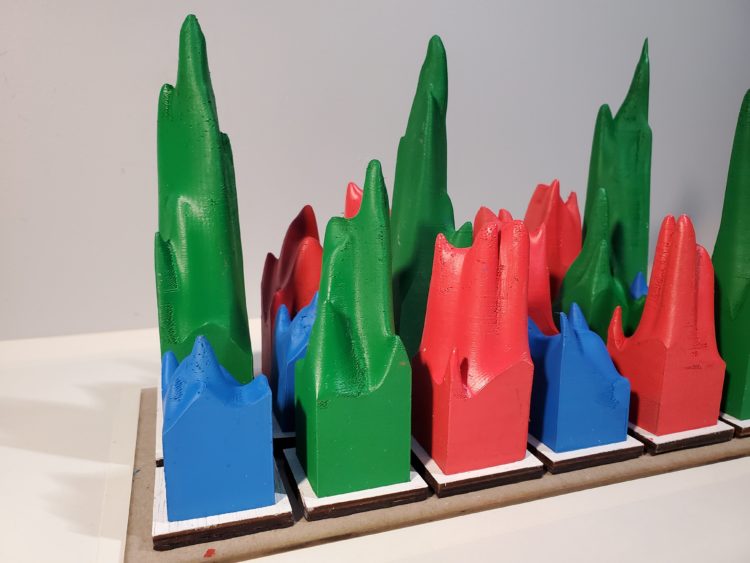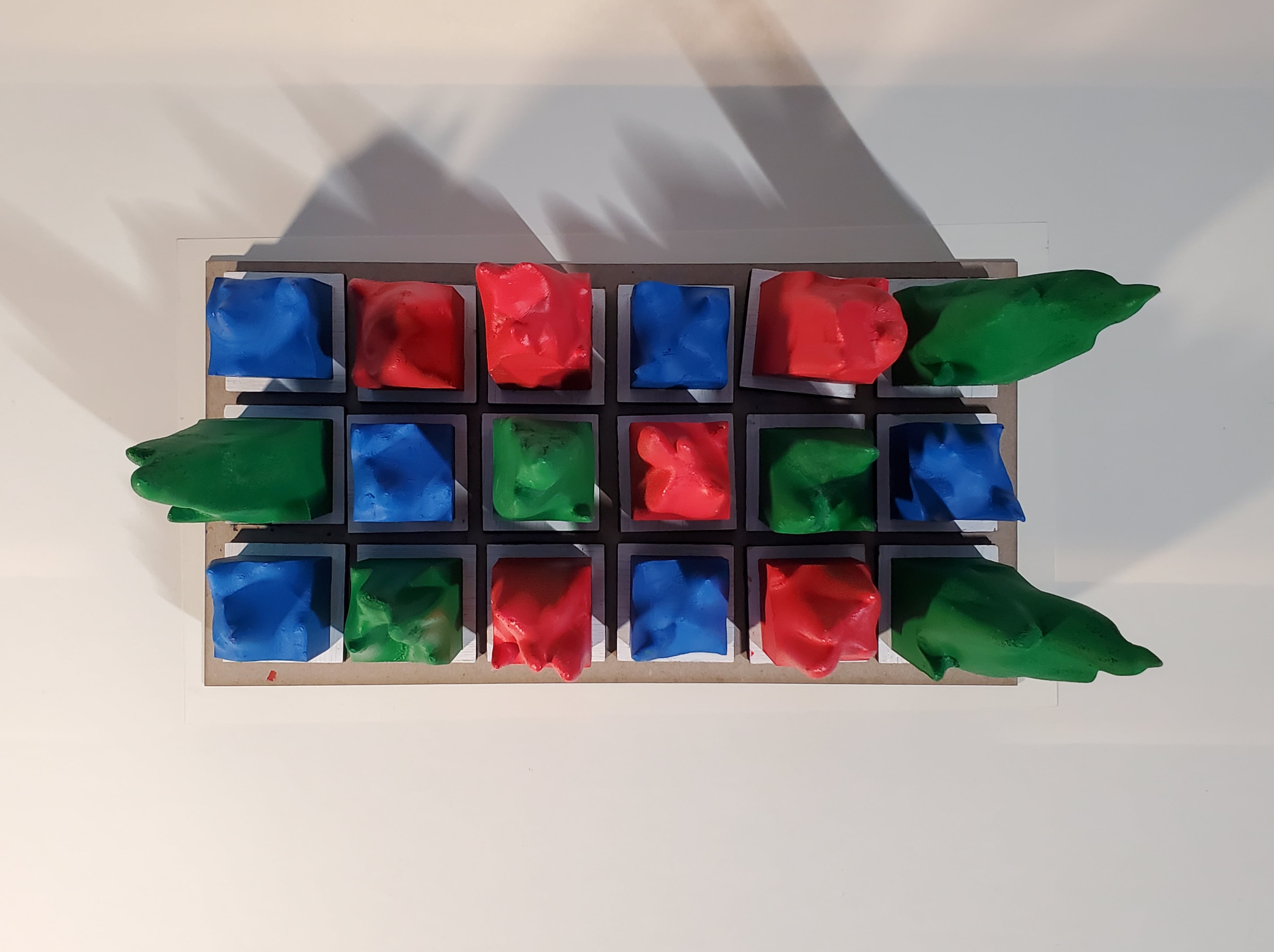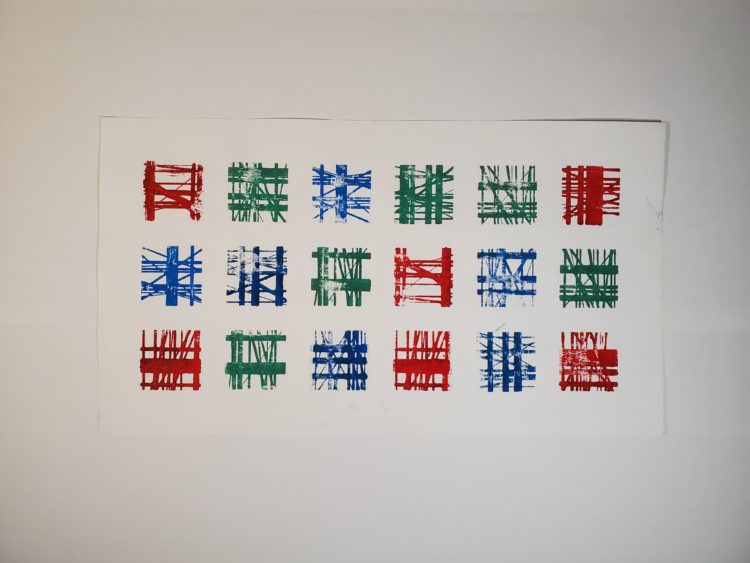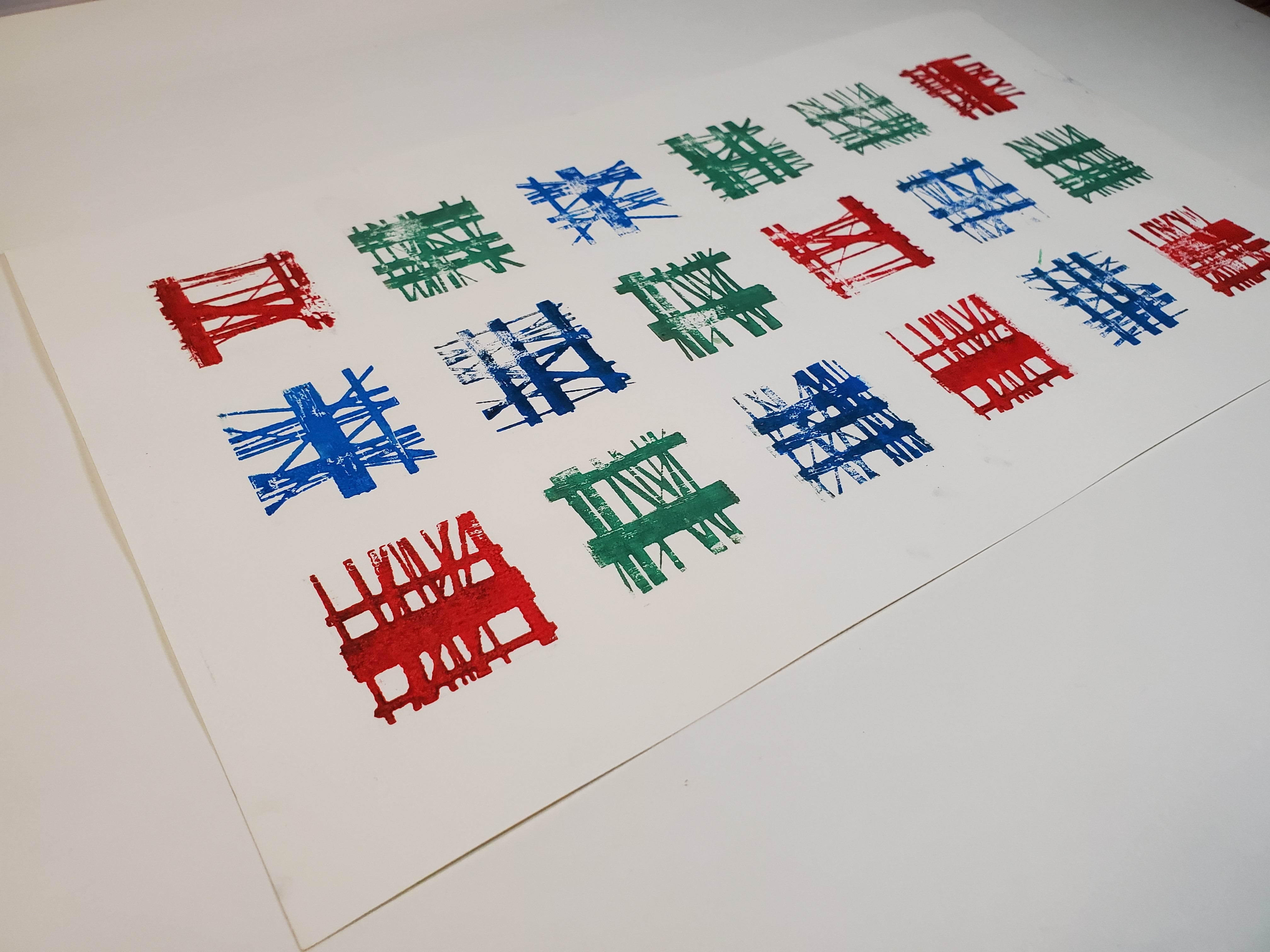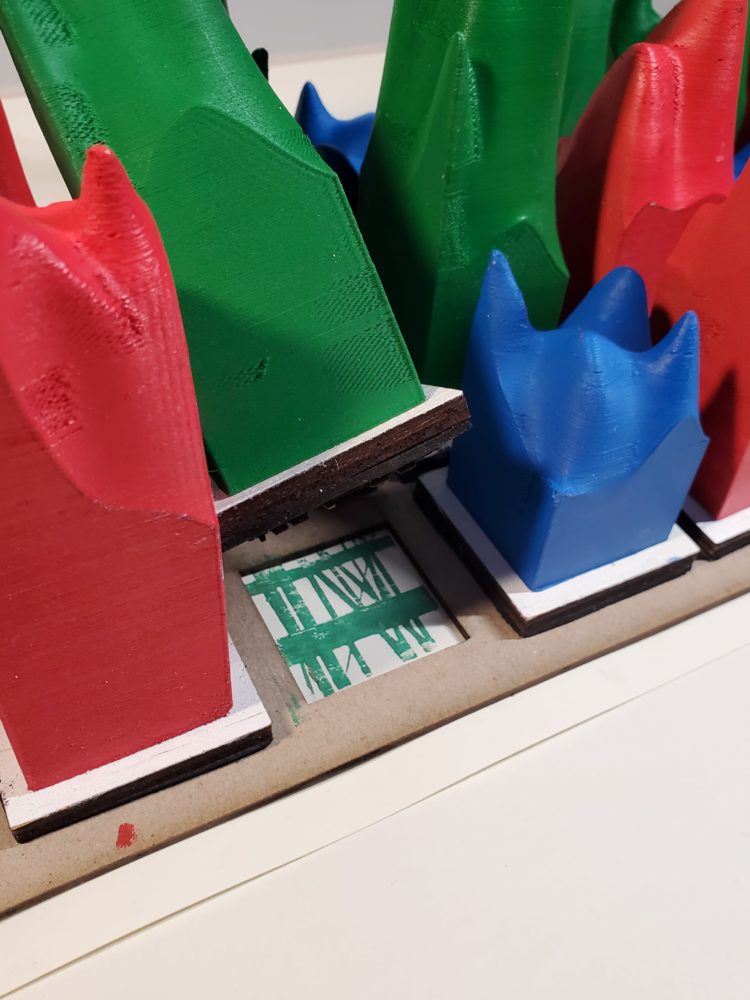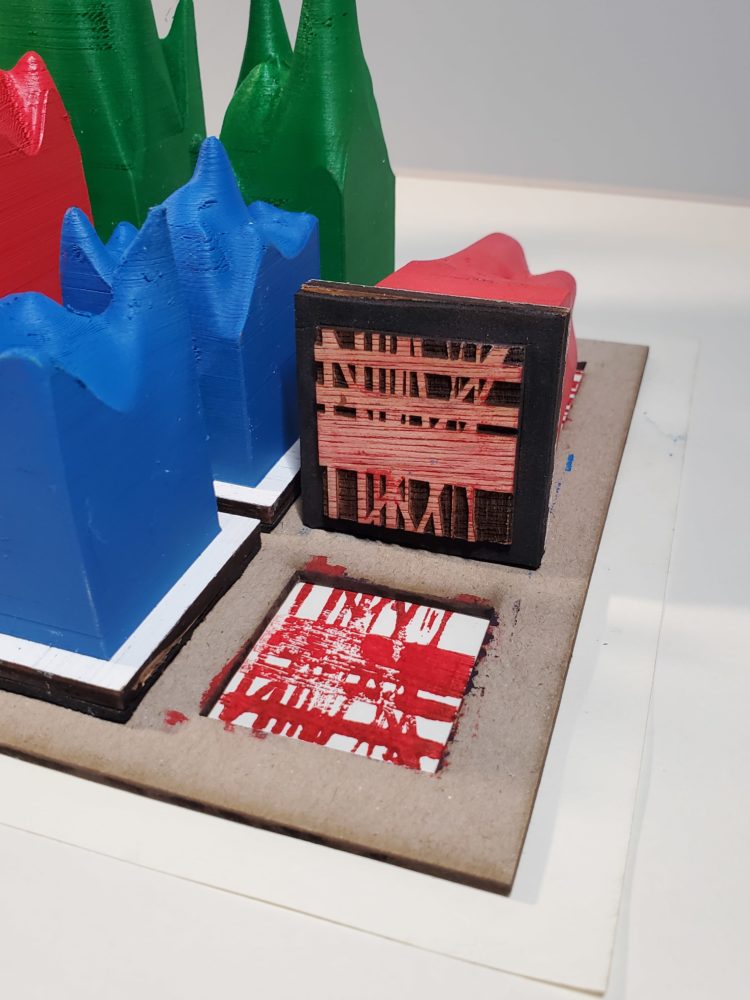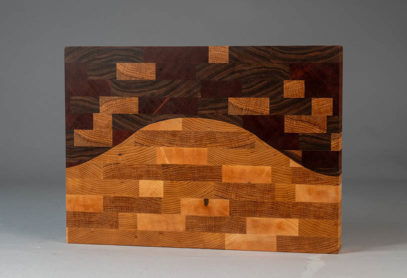ART 362 – Digital Sculpture
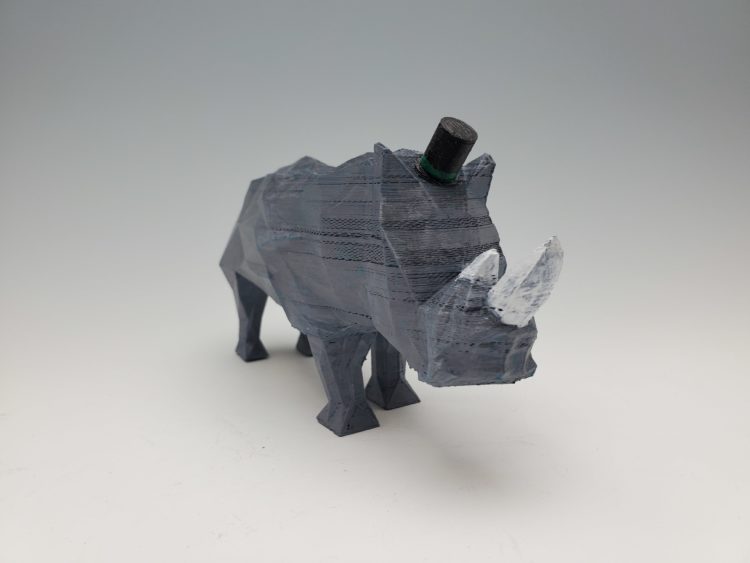 Download Image
Download Image
Taken during my Spring 2023 semester, Digital Sculpture was the first elective class I had taken. I had always wanted to learn Blender and how to 3D print, so this class was a no brainer. Despite the bizarre, once-a-week, six-hour class period schedule, this class flew by. I am very proud of my new found skills and hope to continue to expand upon my knowledge of Blender in the future.
The first project was used to teach some of the most basic concepts and workflows of Blender. This was, quite simply, creating a low-poly animal of our choosing. I chose a Rhino. I named him Hamilton and gave him a little top hat for personality.
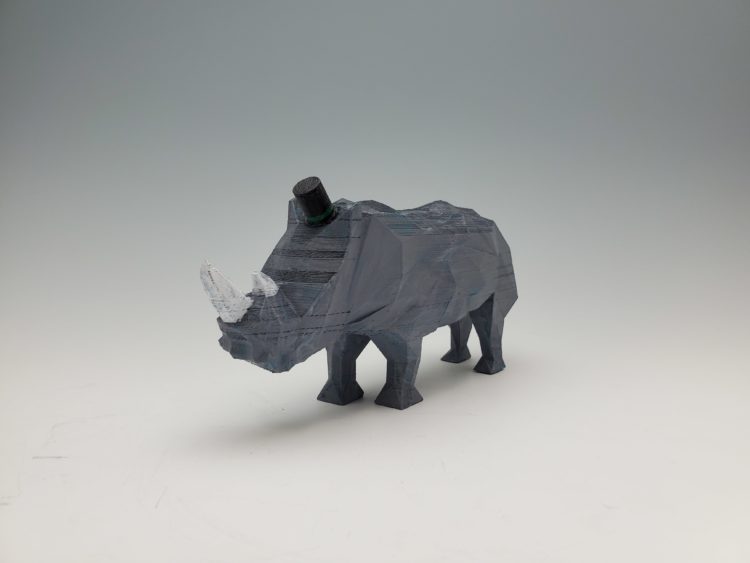
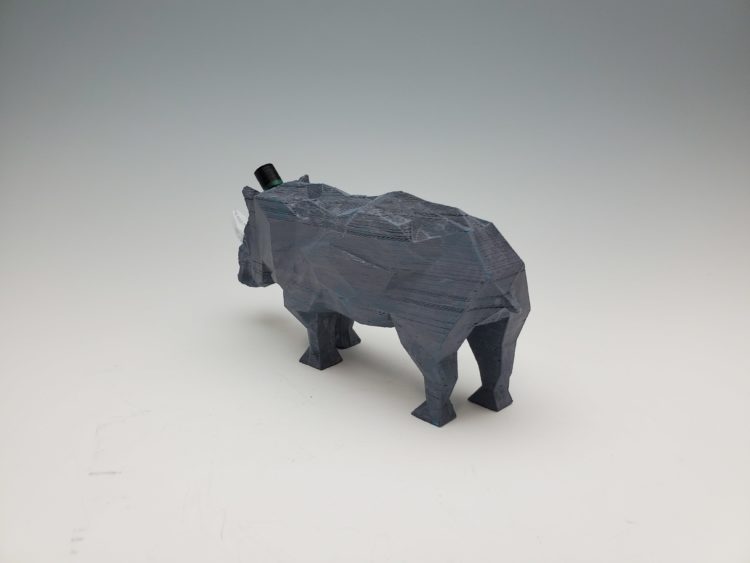
 Download Image
Download Image
The next project introduced us to the sculpting tools in Blender and we were tasked with creating a “blob monster.” My monster is named “Gobbler Gum” and is loosely based on my fear of being misinterpreted or perceived in a way I see as contrary to my true character. I like to think that behind that gooey mouth and outstretched tentacles there is a nice little monster who is just trying to help point out something to the viewer like an unzipped fly or piece of tape stuck on your clothing.
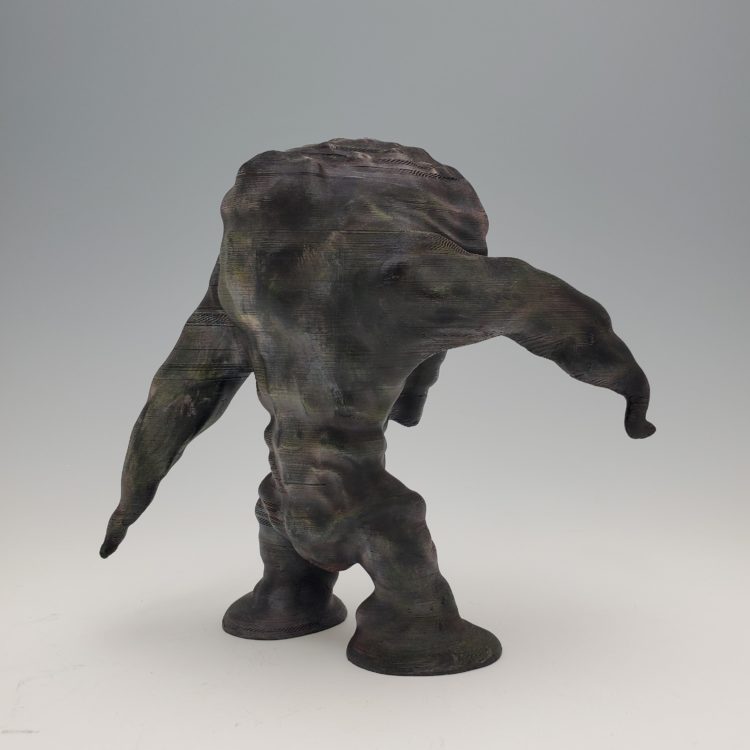
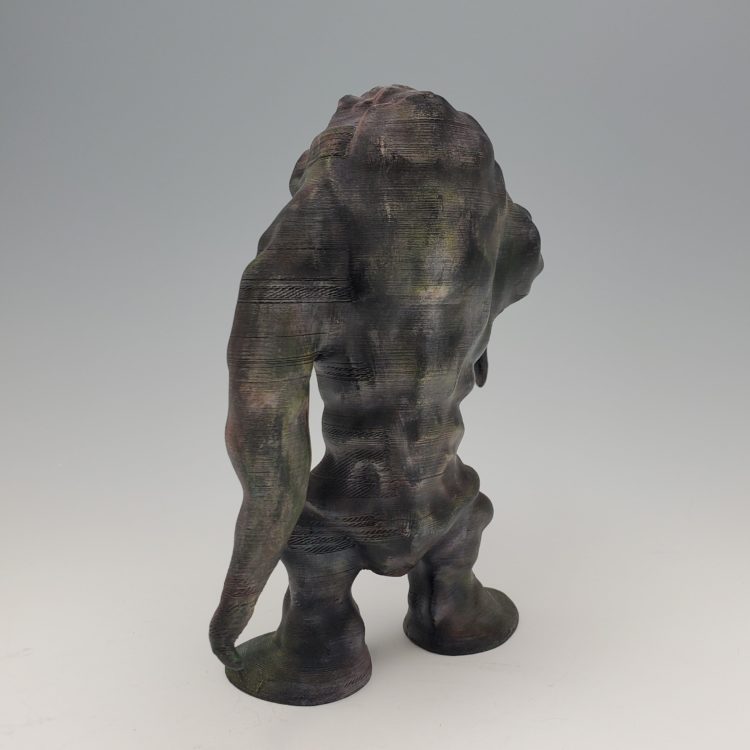
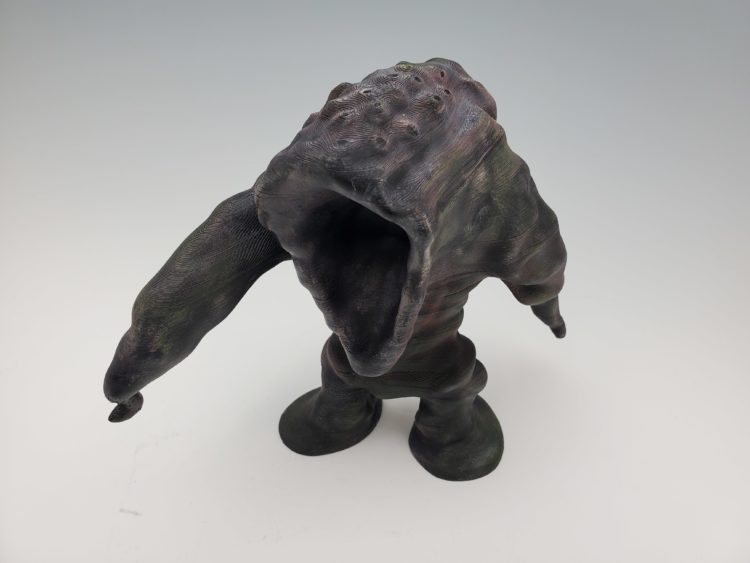
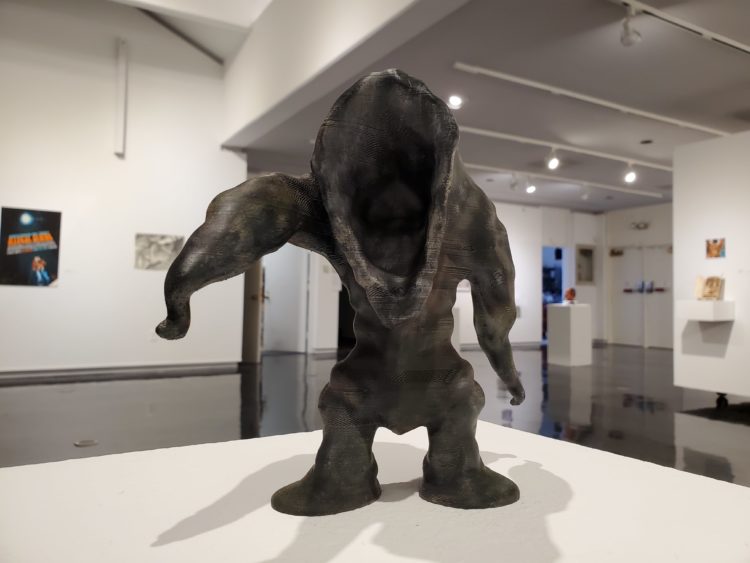
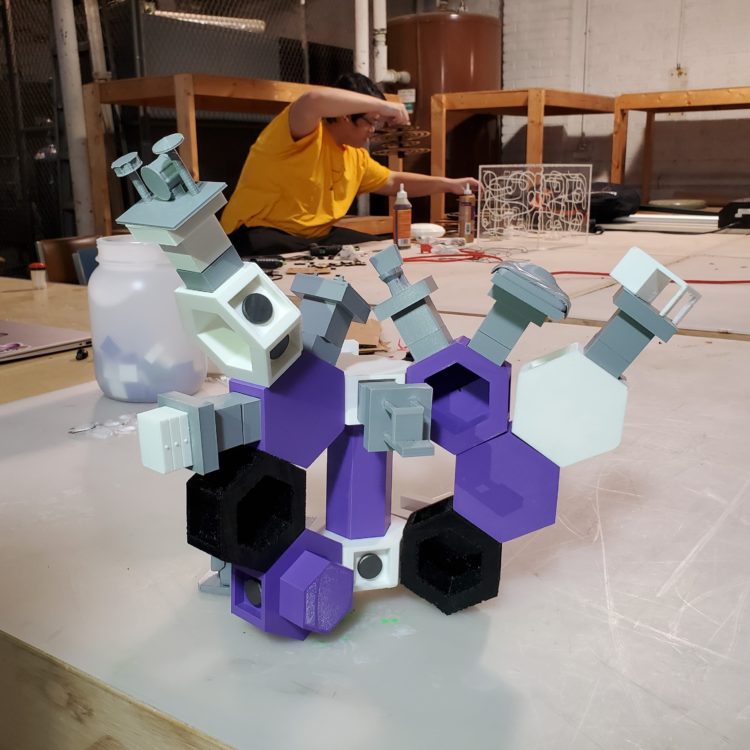 Download Image
Download Image
Our third project was a group project titled “Modules” in which groups of two were to come with an idea for their own module (with intentionally ambiguous instructions). After a couple weeks, the groups of two were split up into brand new groups of three and were tasked with coming up with a new module combining elements of all three previous ideas. My original group came up with the idea of using rooms to describe elements of a narrative. This could include things like a plot-twist bathroom, a comedic-relief bedroom, a set-piece kitchen, etc. These rooms could then be slotted into a system or frame, which then created a unique story. My second group’s modules included hexagons that could be magnetically attached to each other and a pegboard box What it evolved into was a piece I titled “Deconstructed Entanglement,” which is essentially a deconstructed room that can be formed in any dimension imaginable. There are three elements: the hexagons which form the shape of the room, the unique pegs that define the layout/which type of prop can be placed where, and props that correspond to the unique pegs based on type (tables, chairs, beds, etc).
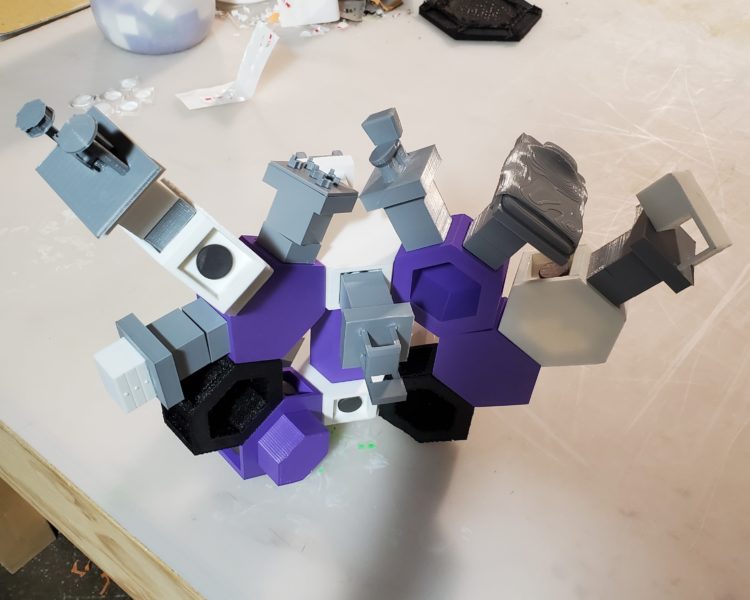
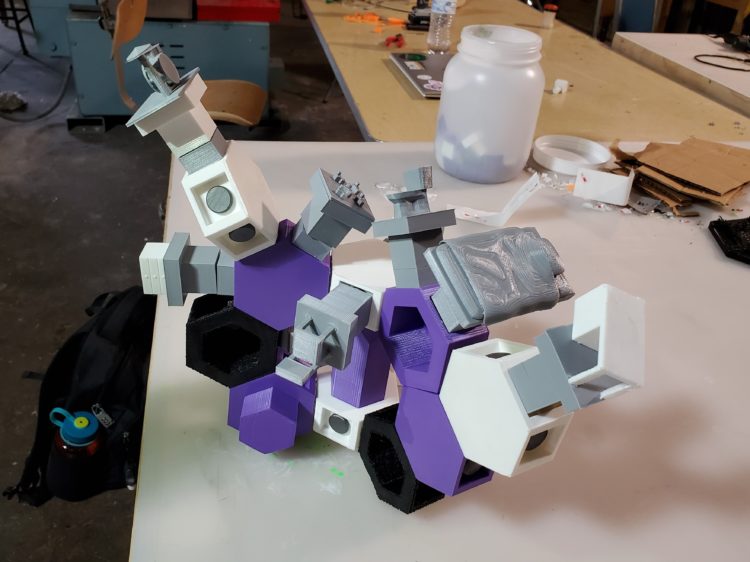
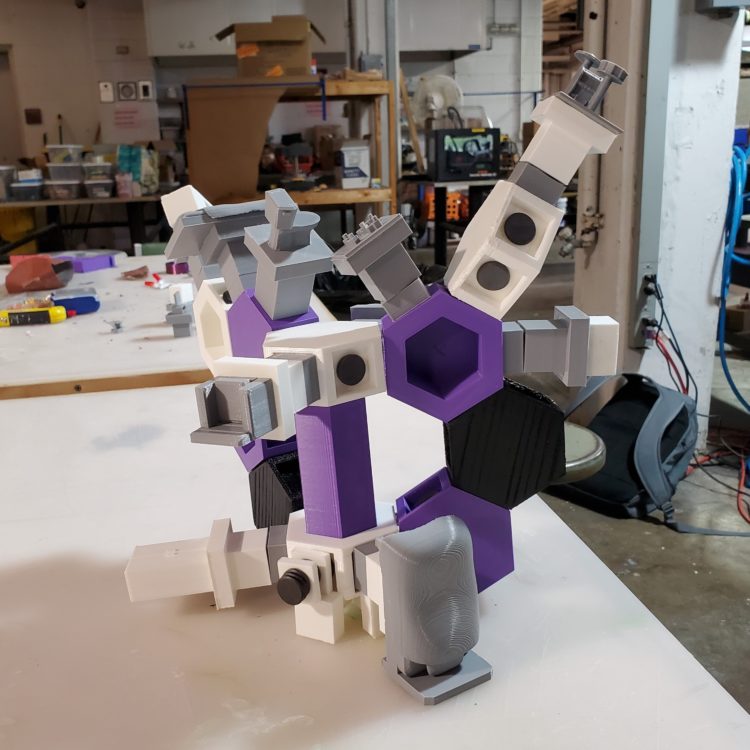
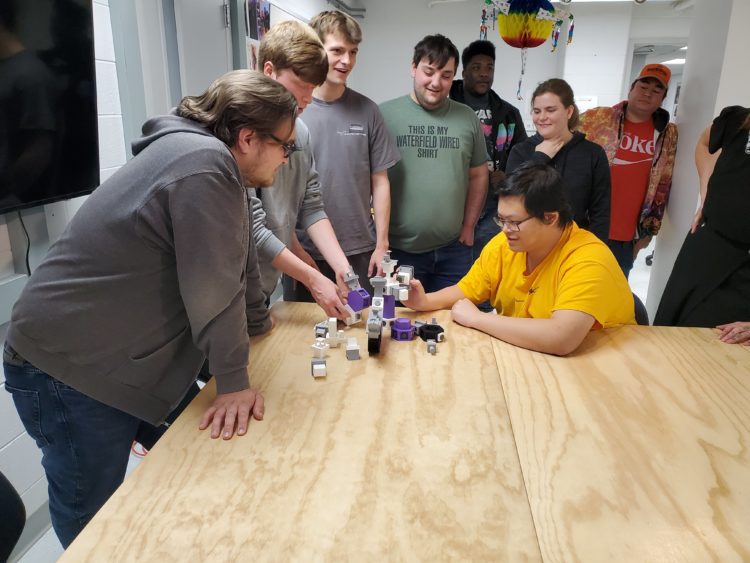
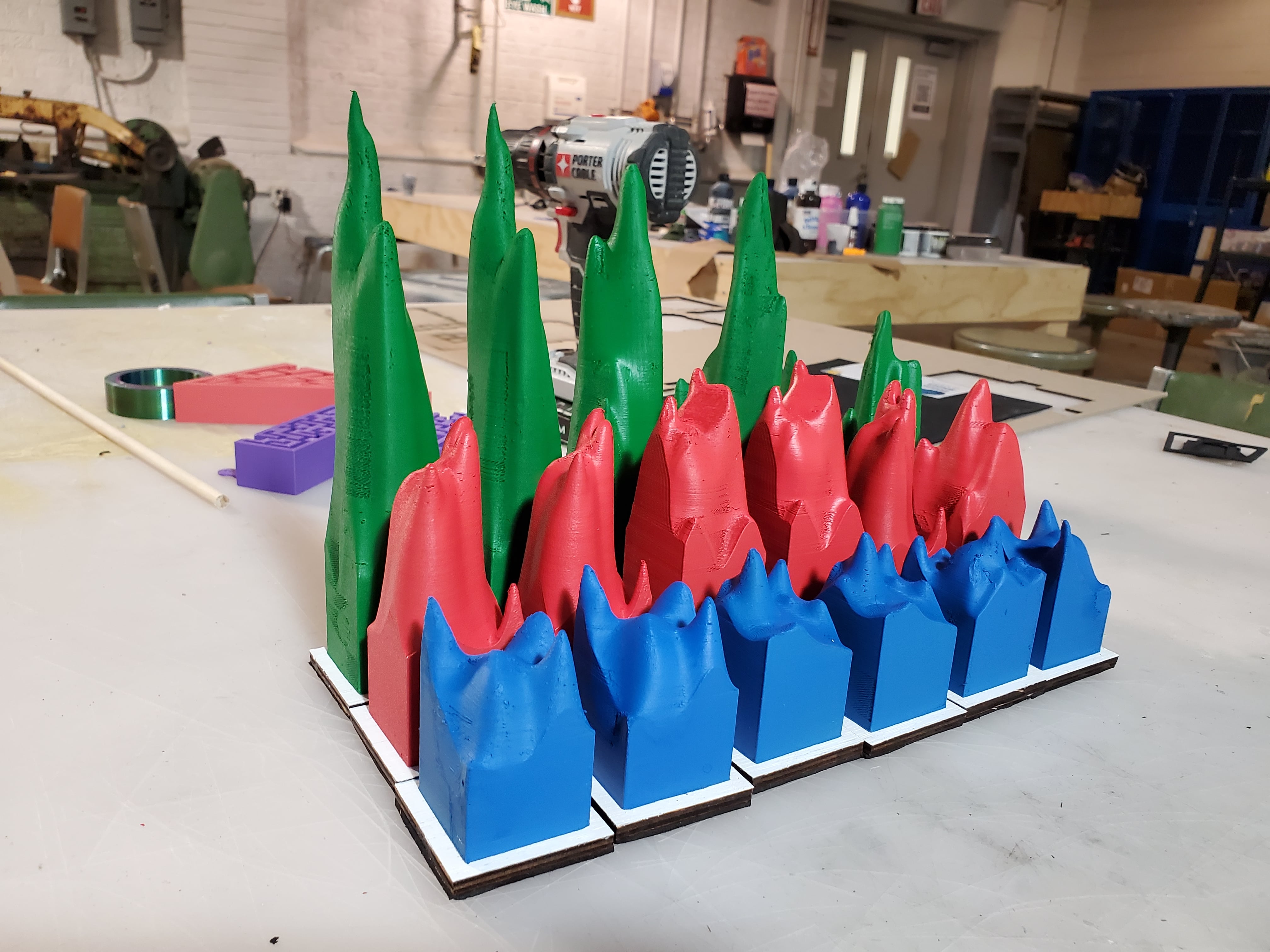 Download Image
Download Image
Our final project was, essentially, create whatever you want as long as you include 3D printing, laser cutting, and some special interest or topic from your major that comes from outside Digital Sculpture. My project, titled “Stamps,” is based around a special interest for designing systems for collaborative art and creating repeatable tools like the ones you can use in graphic design programs. What I created were a set of structures that can be placed on a grid of 1.5 inch squares to create a unique art piece. Each of them are color-coded to their general height (tall, medium, short). One of the most fascinating things about collaborative art pieces like this is that they exist in the moment and therefore need documentation to live on after the event. To fuse both of these parts together, I created stamps on the bottom of these structures that are used to generate a map underneath the art piece. Therefore, there is inherent documentation to the process and a brand new piece of art created at the end of it.
